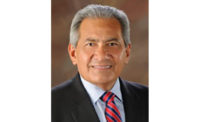Allergan plc, headquartered in Dublin, Ireland, is a global pharmaceutical company. Allergan has more than 17,000 global employees, with operations in approximately 100 countries and revenues of $15.79 billion. ISHN asked David Eherts, PhD, CIH, Vice President Global EHS, based in Madison, NJ, to explain how the company is implementing the “New View” of safety.
Why did Allergan commit to implementing the new view of safety? Why should a company commit to the new view?
In 2013, Allergan (then Actavis) experienced a devastating accident at one of their sites in India. The proximate cause of the incident was a failure by two employees (both chemical engineers) to utilize a bonding strap between a reaction vessel and an intermediate container while charging a flammable solvent.
The Chief Operating Officer, who interviewed me just prior to my joining Allergan in 2014, told me that incident was the worst day in his life. The company had responded with the usual increased emphasis on training and process hazard reviews, but the COO wanted “culture change.” Though my career was mostly in big pharma, at the time of this interview/discussion, I was working as Chief of Safety at a large aerospace firm and because of this experience and exposure to the newly emerging concepts of Human and Organizational Performance (HOP), I was better able to explain to him why their previous efforts were far from sufficient to prevent another similar incident in the future. He understood.
Coincidentally, back in 2014, we were all listening intently to a series of experts assembled by ORCHSE, interested in learning more about HOP. This group of emerging experts included the esteemed Todd Conklin, Eric Hollnagel, Rob Fisher and of course Sidney Dekker, among many others. I listened and read everything, but soon noticed that while the concepts were powerful, there was little discussion of implementation. So I asked my team at Allergan to help me translate this great research into practice (I believe that NIOSH calls this R2P), and we developed a Culture Change Initiative based on these “New View” concepts. This fundamentally transformed the way our leadership, and eventually all of our employees, looked at Safety.
How do you and your team describe the “new view” to your workforce so they “get it”?
I want to reiterate that we invented nothing ourselves but incorporated learnings from the aforementioned experts. We start by explaining what safety is not (i.e., as Todd Conklin pointed out, safety is not the absence of accidents) and explained what safety is (the presence of defenses).
We then used data to dispel “old school” concepts of safety. We started with a two-hour presentation, given personally with the Regional EHS Directors on Human and Organizational Performance concepts and how these translate into our new programs.
We visited ALL the sites and gave the presentation multiple times at each, first with site leadership and, as they became comfortable with the concepts, then with management, then with all employees. We covered all shifts.
Now we’re converting the presentation into 15-minute computer-based training modules in our ELMS for refresher and new employees. As new concepts emerge (we attend workshops and read voraciously), we turn them into programs and update all the sites, including new acquisitions.
The first slide of the original training covered learning objectives: (1) What we believe i.e., the New View; (2) the basic tenants of Human and Organizational Performance (HOP); (3) the results we are getting, including a statistical correlation to decreasing injury rates; and (4) why we get these results i.e., how these translate into our most important programs including Good Observations and Critical Task of the Day, and why they work so well (including reference to the work of Daniel Kahneman and Chris Voss).
How do you get across to workers that this is just not another flavor of the month?
The fact that it is spreading to other parts of our organization including Quality, Security, OpEx and then there are the results. Not just (1) decreasing Injury Rates; but (2) consistently increasing Good Observation Rates; (3) the associated Corrective and Preventive Action (CAPA) Closure Rates i.e., unsafe conditions fixed, unsafe processes corrected and in general, hazards disappearing from our workplaces; (4) the decreasing numbers of Critical Tasks; and most importantly, (5) the soaring Engagement Scores related to safety questions in our enterprise wide engagement survey.
The best thing we did early was to modify/paraphrase a quote from Colin Powell, “The day workers stop bringing you their problems is the day you’ve stopped leading them. They’ve either concluded that you’re incompetent and cannot help them or that you just don’t care. Either way, it’s a FAILURE OF LEADERSHIP.” Our COO was known to quote this to General Managers with decreasing Good Observation Rates. They responded accordingly.
Give a few examples of how Allergan practically applies the new view, and what makes these applications different from traditional safety?
We stole shamelessly BUT always cited and credited the source. Our contribution was in turning the research into practice.
The two programs we’re most proud of are (1) our Good Observation Program and (2) our Critical Safety Task of the Day Program. We share these program details widely outside of Allergan and are happy to collaborate within and outside our industry.
Finally, we fervently insisted that TRIR and other incident rates NOT be used as a metric to reward management and employees in any way, but to replace these types of trailing indicators with leading indicators such as Good Observation rates, CAPA Closure rates and more recently, Critical Safety Task elimination rates. The relationship of these programs to decreasing injuries, a measurable reduction in risk for a serious injury or fatality and dramatic improvements in employee engagement benefit not only EHS but also Quality, OpEx and Productivity.



